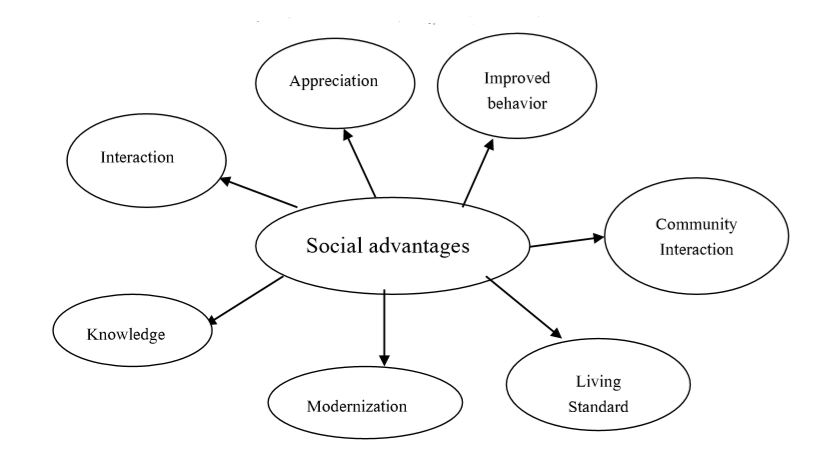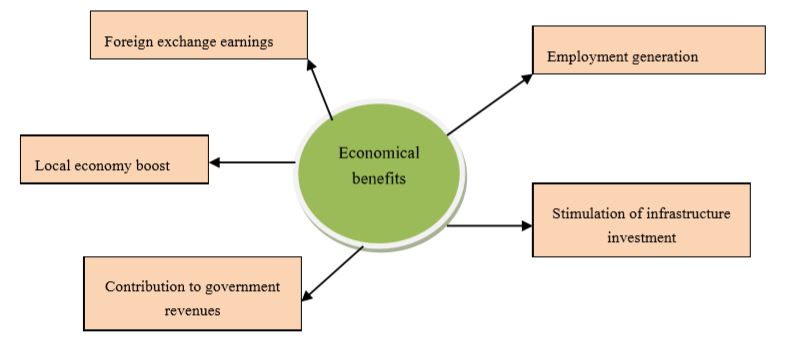Social Implication of Tourism in Himachal Pradesh
Positive social implications:
Tourism activities essentially involve many social benefits that can be seen as a bright aspect of tourism. Normally each tradition and culture is significantly different from another. Tourism can stimulate new and expanded community facilities and infrastructure initiatives, such as the improvement of retail, restaurant and entertainment options, transport services, education, and sporting facilities.
These increase the quality of life for the community, which may not otherwise warrant the improvement, based on the residential population alone. Tourism activity often prompts the conservation of cultural heritage, either as a result of increased awareness and pride or because it can be justified on economic grounds as a tourist attraction.
Tourism can encourage communities to widen their outlook and to embrace new ideas. It provides opportunities for residents to interact with other people, lifestyles, and cultures. Attracting visitors to an area can heighten local awareness and interest, resulting in a greater sense of pride and ownership. The community takes stock of its assets and distinctive characteristics. This increase in pride can lead to community celebration or the revival of cultural activities. Knowing that others have traveled across the state, country, or world to visit can considerably boost a community’s collective ego.
Some of the possible social benefits of tourism are listed below-
- Learning about each other’s culture and customs
- Developing positive attitudes towards each other
- Reducing negative perceptions and stereotypes
- Developing friendships
- Developing pride, appreciation, understanding, respect, and tolerance for Each other’s culture
- Increasing self-esteem of hosts and tourists
- Psychological satisfaction with the interaction
Hence, social contacts between tourists and local people may result in mutual appreciation, understanding, tolerance, awareness, learning, family bonding respect, and liking. Residents are educated about the outside world without leaving their homes, while their visitors significantly learn about a distinctive culture. Local communities are benefited through contribution by tourism to the improvement of the social infrastructure like schools, libraries, health care institutions, internet cafes, and so on. Besides, if local culture is the base for attracting tourists to the region, it helps to preserve the local traditions and handicrafts which maybe were on the link to the extinction. Tourism activities increase from person to person as well as the community to community contacts which ultimately results in better social behaviors.

| Tourism related activities | Social impact (positive) |
| Frequent interaction with local community | Communication |
| Group and personal communication with locality | Knowledge Education |
| Elite tourist arrival , interaction , host | Sense of pride |
| Positive and polite interaction with tourists | Improved behavior |
| Economical growth of destination locality | Infrastructure earning |
| Overall social benefits of tourism | Social upliftment |
Negative social Implications:
The negative social impacts of tourism can be listed as below-
- Destroyer and corrupter of indigenous culture and values of local society
- Ecological destruction and disturbance
- Assault of people’s privacy, dignity, and authenticity.
- Modernization of old social ethics and values.
- Increased and constant noise from traffic due to tourism in peak seasons
- Social misbalance and disturbance of local population
Economic Implication of Tourism in Himachal Pradesh
Positive Economic Implications:
This is really the brightest face of tourism activities. Economical effects of tourism are directly observable. Tourism generates different types of income for a community: business income, wage earnings, share earnings, rates and levies. Direct spending by visitors has a positive impact on business profitability and employment growth. The money that is then circulated and re-spent in the economy is often referred to as indirect spending or the multiplier effect. Because much of a region’s tourism patronage comes from metropolitan centers, it is an effective way to redistribute wealth from urban to rural areas. The expectations and needs of visitors can often lead to the creation of new businesses and commercial activities. This builds a more diverse economic base and reduces reliance on one or two traditional industries, which is often the case in rural communities. A thriving tourism industry supports growth in other sectors, such as transport, construction, agriculture and retailing. As tourism increases, there are more opportunities for small business to develop.
The main positive economic impacts of tourism relate to foreign exchange earnings, contributions to government revenues, generation of employment and business opportunities. Tourism expenditures, the export and import of related goods and services generate income to the host economy.

Negative Economic Implications:
Besides some wonderful economical benefits of tourism can be some serious drawbacks of tourism in economic terms. Tourism can cause a well-known problem of seasonal employment effects on the local population. Jobs involved in the industry of tourism are seasonal and not well paid; this can be very dangerous for countries that become dependent on tourism as their main source of revenue. Seasonal jobs such as these could then possibly lead to high rates of unemployment. The country can generally become dependent on the tourism industry. The various economical disadvantages of tourism are being described below-
Inflation: Increased tourism activities around a local destination can generate the problem of inflation in the local market. During the peak season, the normal prices of goods and services can dramatically increase, which could be a problem for the local population.
Leakage: Leakage is a situation in which capital, or income, exits an economy, or system, rather than remains within it. The direct income for an area is the amount of tourist expenditure that remains locally after taxes, profits, and wages are paid outside the area and after imports are purchased; these subtracted amounts are called leakage. In most all-inclusive package tours, about 80% of travelers’ expenditures go to the airlines, hotels and other international companies (who often have their headquarters in the travelers’ home countries), and not to local businesses or workers. In addition, significant amounts of income actually retained at destination level can leave again through leakage.
Infrastructure and incidental cost: Tourism development can cost the local government and local taxpayers a great deal of money. Developers may want the government to improve the airport, roads and other infrastructure, and possibly to provide tax breaks and other financial advantages, which are costly activities for the government. Public resources spent on subsidized infrastructure or tax breaks may reduce government investment in other critical areas such as education and health.
Economic dependence: Diversification in an economy is a sign of health, however if a country or region becomes dependent for its economic survival upon one industry, it can put major stress upon this industry as well as the people involved to perform well. Many countries, especially developing countries with little ability to explore other resources, have embraced tourism as a way to boost the economy.
Seasonal employment: The seasonal character of the tourism industry creates economic problems for destinations that are heavily dependent on it. Problems that seasonal workers face include job (and therefore income) insecurity, usually with no guarantee of employment from one season to the next, difficulties in getting training, employment-related medical benefits, and recognition of their experience, and unsatisfactory housing and working conditions. These seasonal jobs may include tour guide, local retail market of handicrafts, hotels restaurant etc.
Cultural Implication of Tourism in Himachal Pradesh
Positive Cultural Implications:
As we have discussed earlier India is a big country having various communities and cultures living together by justifying the saying “unity in diversity”. Each culture has its own traditions, religious thoughts, scriptures, language, and living style. Tourism plays a key role to understand and experience these diverse cultures and communities. One of the newly developed trends in tourism filed is cultural tourism which helps different cultures to come together. Frequent interaction between different cultures and communities powers national integrity. Different types of socio-cultural benefits are listed below-
Tourism plays a very important role in the preservation of different types of cultural heritages like sculptures, architectural heritages, monuments, forts etc. every in India has its own culture, traditions, festivals, and handicrafts which have been treated as the heritage of local community. These local festivals and traditions always attract visitors from outside of the community. Many of the places in India are very popular among foreign and domestic tourists for their special festivals and cultural activities such as Himachal Pradesh, Kerala, Assam etc. Tourists often take active part in these cultural activities and enjoy the vibrant festivals during their tour schedule. Participation and interest of tourists into such cultural activities revives the local culture and traditions and eventually benefits the both.
Some of the cultural heritage of local community could be listed as below –
- Oral traditions, local languages, and expressions
- Performing arts
- Social and cultural practices
- knowledge and traditional craftsmanship
- festivals and cultural competitions (classical dance and music)
- preservation and maintenance of ancient monuments and sculptures
These cultural advantages of tourism play a very important role to increase the rate of Exchange between generations, Recreation and cultural development. The cultural preservation due to tourism supports and revives the cultural diversity of the country and hence increases the creativity among local community.
Negative Cultural Implications:
- The commodification of Local Culture
- Standardization of Facilities
- Loss of authenticity and staged authenticity
- Adaptation to tourist demands
- Ethical issues
- Crime generation
- Child labour
- Prostitution and Sex Tourism